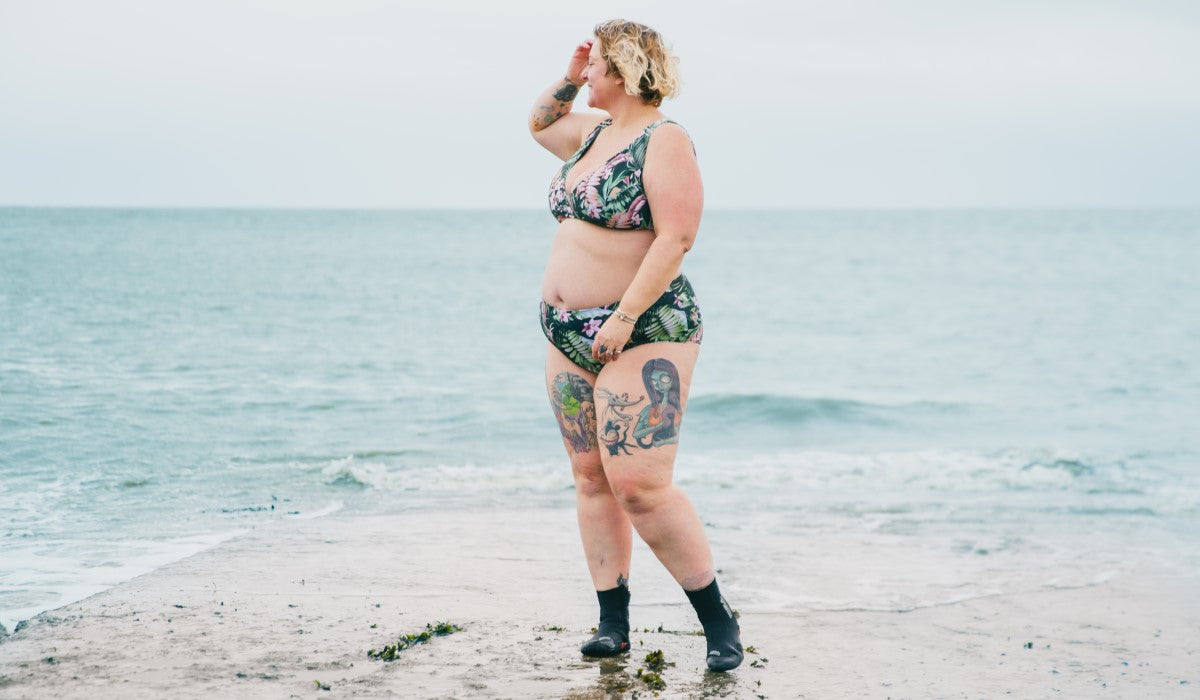Your Bag is Empty
Free UK delivery on all orders over £100. Free UK returns.

Some of the D&B team love a skinny dip – swimming wild, free and au naturelle. But we all have wear swimwear (damn those societal norms) and that means we have to buy swimming stuff.
The problem is, that as responsible consumers, we know that everything we buy has an impact on our environment. Swimming kit is particularly tricky because it needs to be durable in water, and that usually means using plastic, which is environmentally un-friendly to make and dispose of. So how do we shop for sustainable, eco-friendly swimming kit?
Here at D&B, sustainability underpins everything we do. That means that we’ve got pretty good at being sustainable consumers, too. So, we thought we’d share our top tips.
Reducing the sheer amount of stuff that we buy is the single most impactful thing we can do as consumers. Why? Because it saves precious resources at every stage from sourcing raw materials and the energy used in production, to the carbon footprint of distribution, to dispatching items to your home. And, ultimately, it saves the amount of stuff that ends up being thrown away.
“When we talk about sustainable swimwear, we often think about what something is made of and where it's made,” says Rosie. “But, the most sustainable option of all is to buy a style you love and feel amazing in because then you’ll wear it time and again and look after it. Owning three or four things that you feel average in, or aren’t fit for purpose, might mean that you don't really look after them and when they come to the end of their life or they get damaged, you just chuck them away.”

Learning to be a savvy consumer is about understanding where things come from and how they’re made. We can use consumer-power to support ethical, sustainable, independent brands that do everything they can to look after people and planet. That means buying things that are made well by people who are paid well and work under good conditions. Any brand worth its salt will be transparent about all these things.
To do this, consider:

You don’t always have to buy your swimming kit. It’s super easy to hire things like wetsuits, neoprene gloves and tow floats – especially if you’re new to an activity like open water swimming or paddleboarding because you can try before you buy. Lots of hire places also sell ex-rentals.
Our grandparents were on to something with their ‘mend and make do’ mentality. But generations since have lost mending skills and our fast fashion consumer culture means that it’s often easier and more economical to replace than repair.
However, some brands are bringing back the art of repairing garments. We offer repairs to any swimsuit that gets damaged in the first 12 months that you own it. Beyond that, we recommend getting items repaired and altered by a local tailor or online service like sojo.uk.
“I tore a huge hole at the base of the zip on my swimming wetsuit,” says D&B’s Rowan. “Swimming wetsuits are quite thin and fragile, and I couldn’t see how it could be repaired. But I sent it to Bodyline Wetsuits in Newquay who fitted a new panel. I’ve been swimming in the wetsuit for four years since and it’s still going strong.”

So, what happens if your item is beyond repair? A lot of the things in our swim kit are made from plastics because they have to be durable in water. That can make them difficult to recycle – your goggles don’t disintegrate in water and nor do they decompose in landfill, instead they break down into micro and nanoplastics.
However, technology is evolving and some items such as swimsuits can be recycled to make new fabric. “Suits and bikinis that are sent to us are cleaned to have all the nylon recovered. This nylon is then regenerated and purified back to its original quality, before being processed into new yarn,” says Rosie. “These new yarns have all the same qualities as virgin fossil-based nylons and can be used to create new swimsuits and bikinis. It's incredibly clever and incredibly powerful.”
Recycle your swimwear: remove all the fastenings, buckles and zips and send your swimsuits to us and we’ll do the rest.
Recycle other bits of your swim kit:
